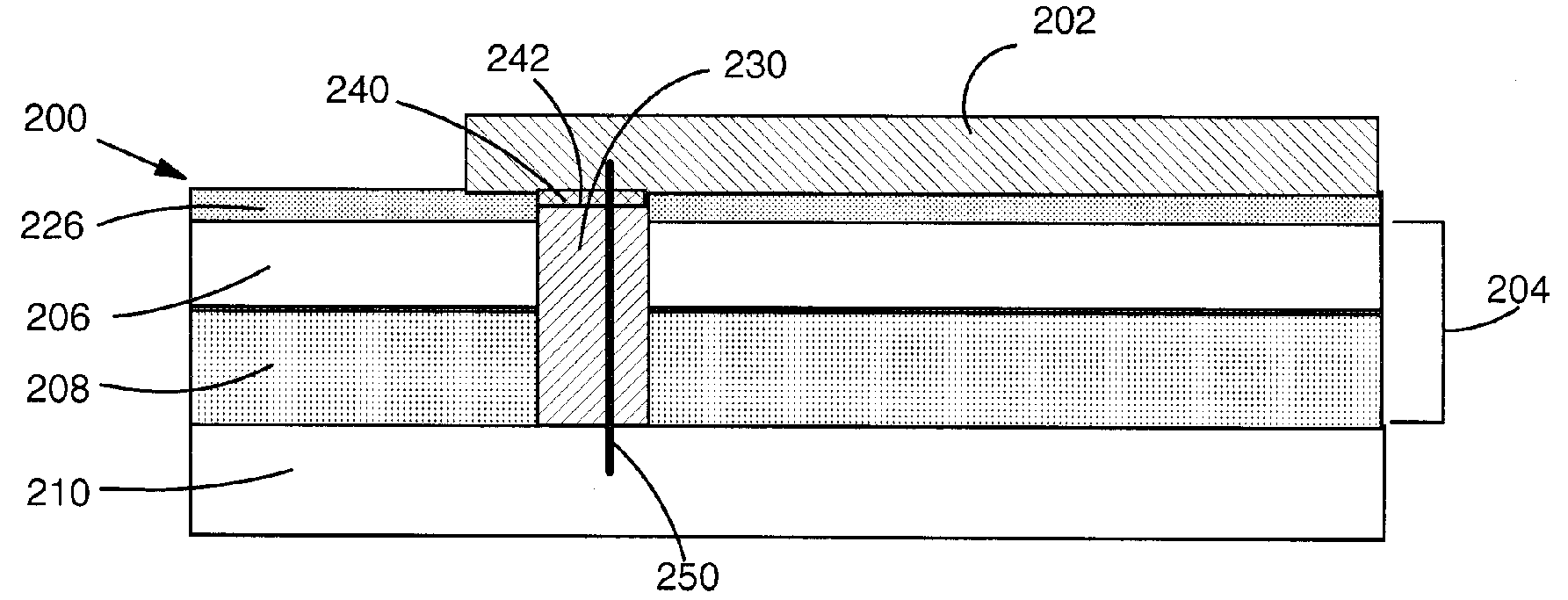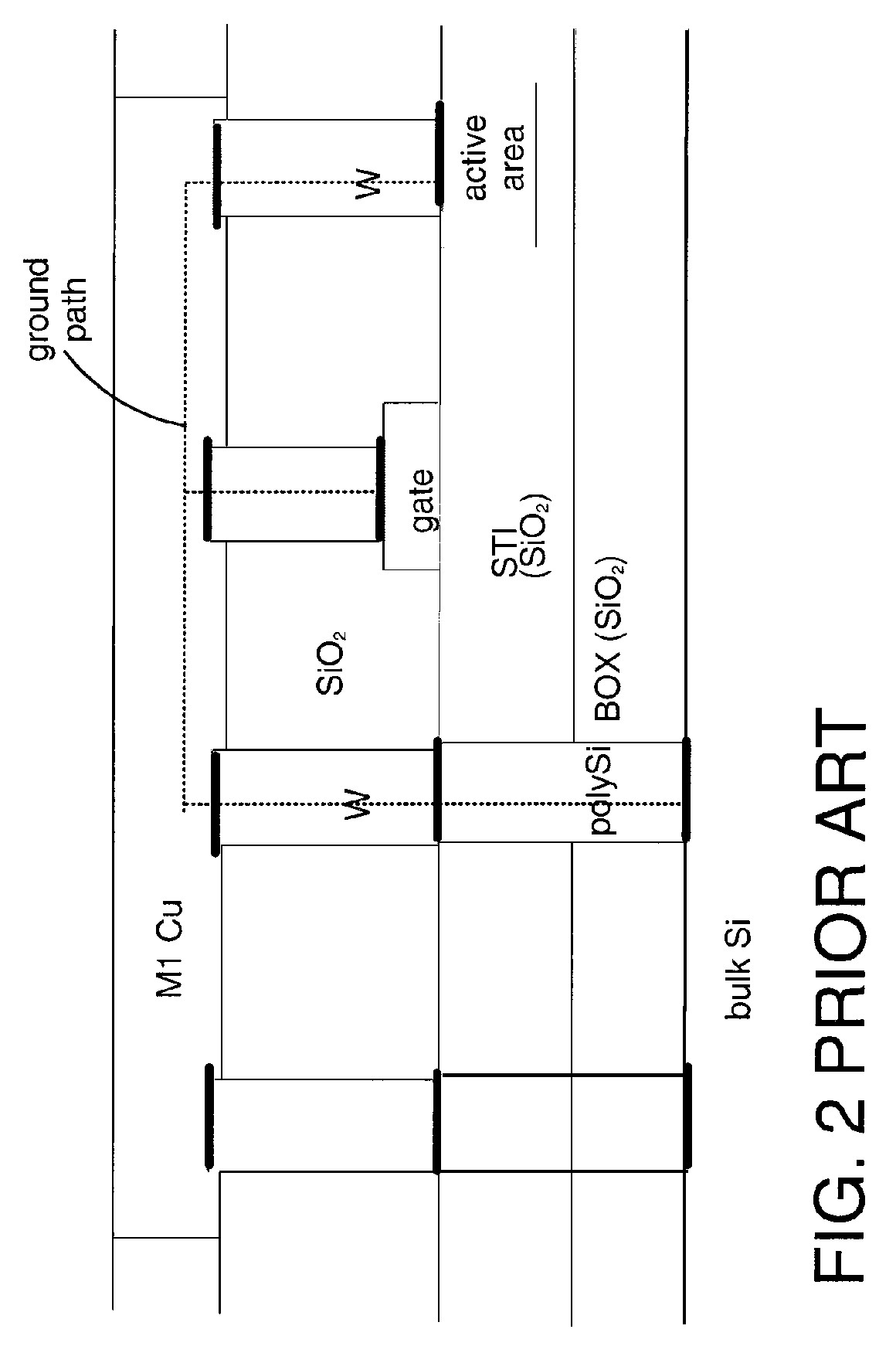Grounding front-end-of-line structures on a SOI substrate
a front-end of line and substrate technology, applied in the direction of semiconductor devices, semiconductor/solid-state device details, electrical equipment, etc., can solve the problems of inability to test vc structures that require grounding of an active region, the above-described grounding technique does not work, and the ground path is not helpful for vc inspection of active region and gate stack structures
- Summary
- Abstract
- Description
- Claims
- Application Information
AI Technical Summary
Problems solved by technology
Method used
Image
Examples
Embodiment Construction
[0022]Turning to the drawings, FIG. 3 shows one embodiment of a structure 100 for grounding a silicon active region 102 within a silicon-on-insulator (SOI) substrate 104. SOI substrate 104 includes a silicon-on-insulator (SOI) layer 106 and a buried oxide (BOX) layer 108. Silicon active region 102 is provided within SOI layer 106. Structure 100 includes a bulk silicon substrate 110 having SOI substrate 104 thereover. As shown in the top view of FIG. 4, silicon active region 102 includes at least one finger element 120 within SOI layer 106 (FIG. 3). In one embodiment, a plurality of finger elements 120 are within SOI layer 106. Each finger element 120 is isolated by a shallow trench isolation (STI) region 122 of, for example, silicon dioxide (SiO2). For example, each finger element 120 is separated from an adjacent finger element 120 by STI region 122. STI region 122 is not shown in FIG. 3 because it has been replaced by polysilicon ground 130, as will be described below. FIG. 3 is v...
PUM
 Login to View More
Login to View More Abstract
Description
Claims
Application Information
 Login to View More
Login to View More - R&D
- Intellectual Property
- Life Sciences
- Materials
- Tech Scout
- Unparalleled Data Quality
- Higher Quality Content
- 60% Fewer Hallucinations
Browse by: Latest US Patents, China's latest patents, Technical Efficacy Thesaurus, Application Domain, Technology Topic, Popular Technical Reports.
© 2025 PatSnap. All rights reserved.Legal|Privacy policy|Modern Slavery Act Transparency Statement|Sitemap|About US| Contact US: help@patsnap.com



